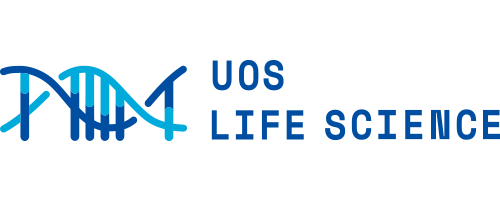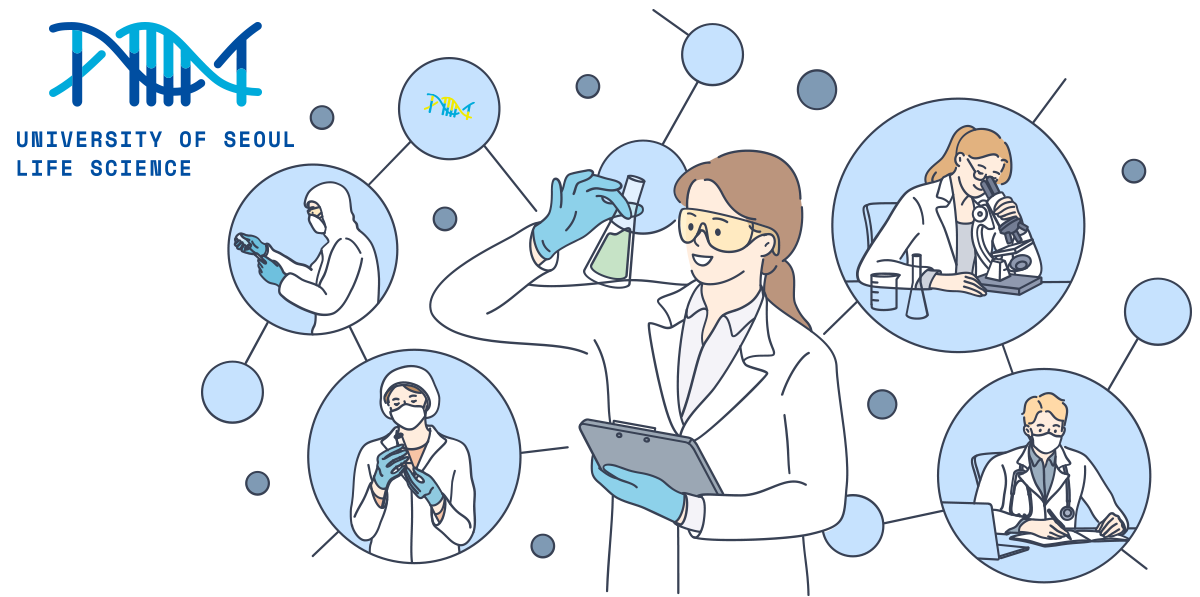
Since its establishment in 1994, The Department of Life Science has been aimed to high quality research and education in the field of life sciences. We are striving for recruiting faculty members, building infrastructure, and improving the laboratory experiments.
Currently, our department has 11 faculty members in charge of 11 majors (genetics, biochemistry, viral immunology, molecular cellular physiology, cellular signal transduction, neurobiology, structural biology, cell biology, nanobiology, bioinformatics, and molecular immunology), with the goal of becoming an internationally competitive department in both education and research.
Curriculum Type : Major Core
Department Goals
Primary goals
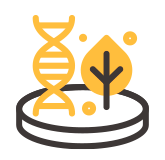
Training of researchers in the field of life sciences

Training of experts in the fields of health, medical care, pharmaceuticals, and administration

Training of creative talents for the development of life science convergence technologies

Graduating experts in the medical field
Detailed goals
1. Cultivate the ability to comprehensively understand and explain biological phenomena at the molecular and cellular levels.
- 1-1Cultivate the ability to understand and explain the structures and physiological phenomena of microorganisms, plants, and animals at the cellular level.
- 1-2Cultivate the ability to understand and explain the principles of inheritance at the molecular and cellular levels.
- 1-3Cultivate the ability to explain and creatively apply animal physiological functions and the developmental processes of organisms through understanding interactions between biomolecules and cells.
2. Cultivate the ability to understand biological phenomena based on principles of physics and chemistry and creatively apply it.
- 2-1Cultivate the ability to comprehensively explain biological phenomena by applying the basic principles of physics and chemistry.
- 2-2Cultivate the ability to creatively utilize in-depth understanding of the structure-function characteristics of major biological components (proteins, nucleic acids, lipids, etc.).
- 2-3Cultivate the ability to apply physical and chemical principles to the development of biological products and pharmaceuticals.
3. Cultivate the ability to analyze and predict biological phenomena statistically and mathematically.
- 3-1Cultivate the ability to collect various biological information and statistically analyze it.
- 3-2Cultivate the ability to infer and predict biological phenomena through mathematical analysis of biological data.
- 3-3Cultivate the ability to statistically analyze biological information related to public health and apply it to policy formulation
4. Cultivate the ability for creative problem posing and self-directed problem-solving for understanding biological phenomena.
- 4-1Cultivate the ability to pose creative problems related to major themes and international issues in modern biology.
- 4-2Cultivate the ability to design experimental methods for self-directed resolution of various biological problems.
- 4-3Cultivate the ability to plan, execute, and logically present problem-solving methods and results through smooth discussions and communication among peers.
Activities and Career Fields
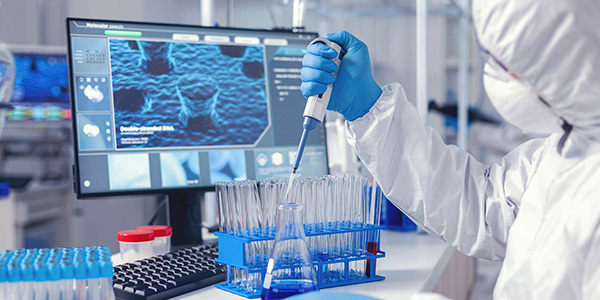
Training of researchers in the field of life sciences
Entering graduate schools and research institutes both domestically and internationally.
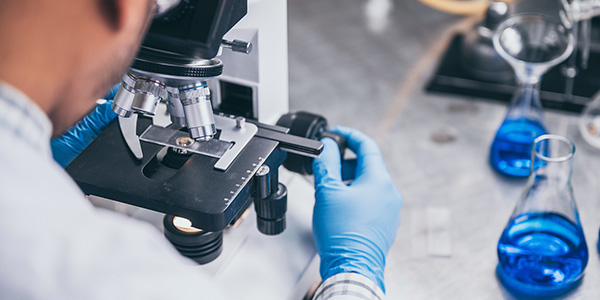
Training of experts in the fields of health, medical care, pharmaceuticals, and administration
Entering public-private institutions and international organizations in the fields of health, medicine, pharmaceuticals, and food.
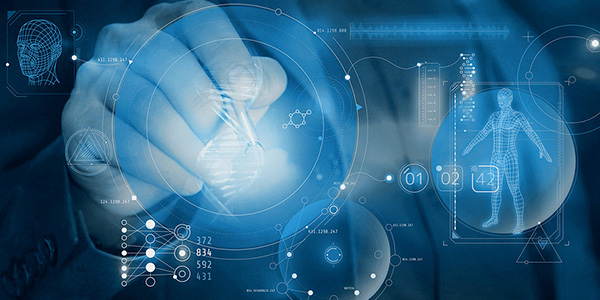
Training of creative talents for the development of life science convergence technologies
Entering the field of interdisciplinary technologies

Graduating experts in the medical field
Entering careers in pharmacy
Paths after graduation
The field of life sciences provides specialized knowledge required in various fields such as pharmaceuticals, disease diagnosis, cosmetics, food, and environment.
After graduation, our alumni are actively contributing in various fields including pharmaceuticals, bio-pharmaceuticals, bio-technology related companies, food and cosmetics related companies, medical statistics, and as medical policy public officials in the Ministry of Health and Welfare and the Food and Drug Administration, as well as lawyers, researchers, and university professors. Due to the rapid academic advancement in the field of life sciences and the fast convergence with other disciplines, graduates in life sciences are expected to enter even more diverse fields.
After graduation, our alumni are actively contributing in various fields including pharmaceuticals, bio-pharmaceuticals, bio-technology related companies, food and cosmetics related companies, medical statistics, and as medical policy public officials in the Ministry of Health and Welfare and the Food and Drug Administration, as well as lawyers, researchers, and university professors. Due to the rapid academic advancement in the field of life sciences and the fast convergence with other disciplines, graduates in life sciences are expected to enter even more diverse fields.
Major competencies and the relationship between core capabilities and major competencies.
Major competencies
| Code | Major competencies | Relevance to educational objectives |
|---|---|---|
| Basic Knowledge | Understanding general biological phenomena | 1, 2 |
| Core Knowledge | Understanding life phenomena at molecular, cellular, and animal levels | 1 |
| Integrated Knowledge | Understanding biological phenomena based on principles of chemistry, physics, and statistics | 1,2 |
| Applied Knowledge | Applying comprehensive thinking to understand and apply knowledge about biological phenomena | 1,2,3 |
| Analytical Skills | Collecting, analyzing, and utilizing various information and techniques | 3,4 |
| Design Skills | Designing methods to understand life phenomena through various approaches | 4 |
| Problem solving | Identifying problems and autonomously solving them by evaluating and selecting the best alternatives | 3,4 |
| Collaboration Skills | Collaborating effectively to achieve common goals | 4 |
| Communication Skills | Communicating effectively using biological terminology | 4 |
Relationship between core capabilities and major competencies
| Core capabilities / Major competencies (Code) | Expertise | Communication | Creativity | ||||||
|---|---|---|---|---|---|---|---|---|---|
| Comprehensive thinking | Information & technology utilization | Problem solving | Empathy and collaboration | Global perspective | Social contribution | Creation | Convergence | Innovation | |
| Basic Knowledge | ● | ● | ○ | ||||||
| Core Knowledge | ● | ● | ○ | ||||||
| Integrated Knowledge | ○ | ● | ● | ||||||
| Applied Knowledge | ● | ● | ○ | ||||||
| Analytical Skills | ● | ● | ● | ||||||
| Design Skills | ● | ○ | ● | ||||||
| Problem solving | ● | ● | ● | ||||||
| Collaboration Skills | ● | ● | ● | ||||||
| Communication Skills | ● | ● | ● | ||||||
Graduate education and research objectives
Fostering R&D personnel at the international top level
Achieving research standards equivalent to top-tier universities in the United States and leading universities in Korea
Achieving research standards equivalent to top-tier universities in the United States and leading universities in Korea
Education
University
1. Comprehensive understanding of biological phenomena
2. Self-directed inquiry skills
3. Logical analytical skills
4. Creative problem-solving
5. Specialized education in pharmaceuticals and health fields
6. Double major with other disciplines
2. Self-directed inquiry skills
3. Logical analytical skills
4. Creative problem-solving
5. Specialized education in pharmaceuticals and health fields
6. Double major with other disciplines
Graduate school
1. Conducting innovative basic research
2. Conducting industry-academic collaboration research
3. Conducting clinical-linked research
4. Conducting interdisciplinary convergence research
5. Cultivating independent research skills
6. Fostering specialized life science professionals
2. Conducting industry-academic collaboration research
3. Conducting clinical-linked research
4. Conducting interdisciplinary convergence research
5. Cultivating independent research skills
6. Fostering specialized life science professionals
Career
(domestic and international universities, companies, research institutes)
(pharmaceuticals, medical, health, beauty, food)
Objectives
Cultivate leading professionals in life sciences, bio-health, and medical fields at the global level
